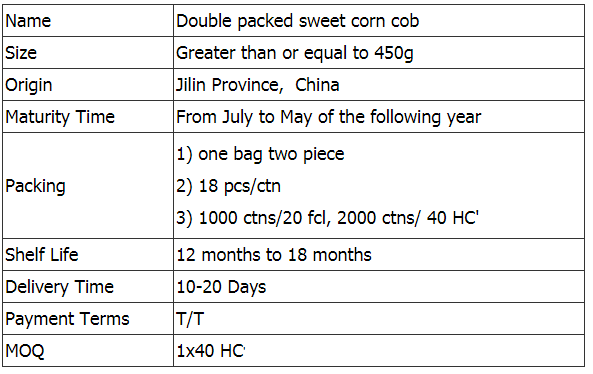Release date: 2017-11-14 In the past few years, we have seen the booming AI field, and a variety of emerging tools have sprung up in our lives. Self-driving vehicles and convenience stores that are on call 24 hours a day have earned people's attention and people's quality of life has improved significantly. However, in the field of medical health, emerging technologies that have already been at the forefront of the times have not fully played their due role. In view of this, Artefact, a Seattle-based technology design company, put forward the concept of “Aim†and designed a lightweight autopilot AI clinic to provide patients with on-site medical services. The arterial network (WeChat: vcbeat) was introduced in detail. Existing medical system is rigid and inefficient In today's medical experience, regardless of whether the patient is a chronic disease patient or whether the patient has not been diagnosed, they are forced into a non-differentiated medical service system. The patient's health data is also stored in a very different system, so clinicians often cannot effectively obtain patient-related information. Although in the same social system, we did not consider the consequences when allocating medical resources. The shape is a moving car Aim is an emerging service platform proposed by Artefact that aims to structure the foundations of positive medical outcomes by providing a better care experience and new and flexible models of discovery, understanding and intervention. Aim not only represents artificial intelligence and medicine, augmented interactions and mobility, but also represents the company's goal of designing and building a more integrated and efficient care system. Based on autonomous vehicles, Aim uses AI technology to diagnose patients' health issues, providing a more accurate medical assessment and addressing specific medical care needs. Rob Girling is a former employee of Apple Design consultancy Artefact was founded in 2006 by Gavin Kelly and Rob Girling, focusing on consumer electronics, communications and computer software services. The company is headquartered in Seattle. Founder Gavin Kelly was an Ogilvy employee, and Rob Girling was a former employee of Apple. He also worked for Microsoft, Adio and Sony, both of whom had participated in the design of Microsoft Office. On-demand distribution to promote medical care innovation systems Aim's mission is to fill the gap between patients' data, experience and traffic burden between the home and the clinic. The demand-based allocation model for the provision of medical care services, as well as the holistic concept of the entire industry, not only brings more autonomy to patients, but also helps care institutions to classify patients more effectively and manage medical care. The burden of the system and the efficient allocation of resources. In the past, we valued the scale and cost of care rather than its value. This brought the rigid, rigid medical system to patients, care institutions and society. There were gaps and problems and disputes to be solved. In the past, innovations that attempted to save this complex system often used the removal of the East Wall to fill the Western Wall, leaving more problems. An electronic health record system is an example. To address the interconnectedness of medical care, what we need is a system-level approach. A special thing about Aim is that it doesn't focus on individuals. Data platforms, autonomous vehicles, AI-assisted diagnostics, these are existing technologies, with a focus on how they relate to each other, how they work together in the same system, and how we can maximize value at the patient, health care provider and social level. Turn. Autopilot clinic, immersive diagnostic environment Aim provides patients with the medical care they need through automated driving clinics, minimizing the burden of travel on patients, making them more likely to participate in treatment before medical costs rise. At the same time, Aim helps doctors focus on more complex patients, which is where they come into play. Aim's automated driving clinic is optimized to diagnose patients for temperature, imaging and respiratory analysis. As soon as you walk in, the floor will record your weight. The pressure sensor measures body mass index and posture. The seat has a built-in acoustic sensor that listens to your breath like a stethoscope. Immersive experience Although the care process varies from patient to patient, existing medical systems still structure the medical procedures of all patients in the same way. Aim uses artificial intelligence and autonomous vehicle technology to provide patients with more accurate assessments and specific medical care. Aim will interact with the patient to share their feelings and work with diagnostic tools. The surround screen provides augmented reality interaction, and the motion sensor works with the body projector to guide the patient throughout the medical experience and to make it clear where the pain is and help the user focus on their symptoms. Telemedicine consultants and car pharmacies, mobile clinics If the self-assessment shows that the patient needs to consult a physician, the Aim platform will contact a co-doctor who is on call. The Aim clinic can also be converted directly into an ambulance and immediately deliver patients to the emergency room, ensuring critical time for patients to enter the clinic. Telemedicine-assisted diagnostics and visualization data In addition, Aim provides patients with a highly visual summary that makes it easier for them to understand their diagnosis and put it into action. Patients can access these diagnostic data in real time via the mobile app for new continuous care. Aim also has a pharmacy for simple prescription drug replenishment or simple diagnosis. Under the blessing of AI technology, it can automatically distribute commonly used drugs such as prescription painkillers, antibiotics, and contraceptives. Bring your own pharmacy function Aim can also clearly tell you the cost of a treatment, digging patient data with common symptoms, and providing more detailed data analysis, rather than relying on the past experience of a single doctor as before. Aim's small warehousing for these frequently used drugs eliminates the burden of transportation for visiting pharmacies. At your fingertips Aim's vision for the future is this: health care should be a care continuum, and patients no longer need to visit a hospital. It all starts with your bathroom, and smart mirrors, toothbrushes, and toilet lights can track your vital signs. In the event of any problems, the Autopilot Clinic will immediately appear at your doorstep or at the company's doorstep, automatically guiding you through a series of checks. You will be advised to seek medical attention only if you really need to see a doctor immediately. The doctor will also be equipped with an AI assistant who will help the doctor to review your diagnostic records and health trends over the years and compare these data to those with the same health status, and then make advance diagnosis and treatment recommendations. Home environment, continuous collection of health data For anyone interested in the development of the medical care industry, these sights will not be unfamiliar. People have long believed that wearable devices can collect our health data and help doctors view our vital signs data. Aim's latest point is the use of self-driving vehicles. Although this car looks like a vase, it is actually a well-designed space. Artefact Executive Creative Director Matthew Jordan said: "There is another mystery in this car." It is like a CVS convenience clinic with wheels, where patients can guide themselves to medical treatment, thus cutting medical costs. Regardless of what others say, the complexity of medical care is well known. Some of these complexities are inevitable, and a large part of it becomes a burden on the medical system over time, dragging down efficiency, experience and cost. Emerging technologies and new business models, as well as people's increasing attention to their health, have given us special opportunities to target higher goals and design more efficient medical systems to meet patients. , medical care providers and the various needs of society. Attitudes Artefact designer Ben Collette said: "The challenge is that we need to build a new user experience based on the current technology within a year or two. We have not invented anything new, everything you see. It is or will be clinically proven." Doctors are not completely excluded, and Aim still has room for telemedicine, remote and face-to-face consultations. Artefact pointed out that 52% of Kaiser Healthcare's business in 2015 was completed online, and Aim Autopilot Clinic can promote this part of the business to continue to develop. The future that Aim is looking forward to may be unbelievable because it is too good. While supporting Aim's core technology is working, it's still hard to imagine autopilots and automated consultations in times when Uber needs manual operations. Insurance companies may need to pay for this, and patients themselves need to be more open to their own private health data. The US Food and Drug Administration believes that these changes are necessary, but the structure of the medical care industry itself is slow and clumsy. In the end, all of this requires the cooperation of major companies and agrees to achieve interoperability of patient data. Artefact does not currently have a customer for the project, and the designers have no plans to bring it to market. Jordan said: "What we want is to let everyone see what the future can look like. So, Aim will be the same as Polaris, it will guide what we should expect. We need a better care experience too." Reference materials: Https:// Https:// Https:// Source: Arterial Network A medium-sized cob of corn provides more than 10% of our daily dietary fibre requirements.
Fibre is fermented by bacteria in the colon. Promising studies are underway to determine the health-promoting effects of fibre fermentation breakdown products, for example, short-chain fatty acids, which may help to maintain a healthy gut.
Yellow Sweet Corn,Double Packed Sweet Corn,Double Packed Sweet Corn Cob,Double Packed Yellow Sweet Corn Jilin Province Argricultural Sister-in-law Food Co., Ltd. , https://www.nscorn.com
There are two types of dietary fibre - soluble and insoluble - and sweet corn contains both.
According to the American Heart Association, dietary fibre as part of an overall healthy diet can help lower blood cholesterol levels and may reduce the risk of heart disease. It is insoluble fibre that binds to cholesterol, preventing it from being absorbed into the bloodstream.
Insoluble fibre is responsible for promoting regularity and helping to prevent constipation by speeding up the passage of food and waste through the intestines and absorbing water to keep stools soft. Insoluble fibre has been shown to reduce the risk of haemorrhoids.
Fibre-containing foods such as sweetcorn also help to provide a sense of satiety and may therefore help to suppress appetite and aid weight management.
Dietary fibre has also been linked to a reduced risk of type 2 diabetes. A diet rich in fibre helps patients manage their disease.

